The Co-optation of Austin Pets Alive
APA’s embrace of regressive directors and their equally regressive policies highlights how organizations become corrupted and provides a cautionary tale for others
Recently, a staff member at the Philadelphia, PA, pound physically abused a dog named Saint. Saint was placed in a kennel “with a jaw broken so badly that [he] couldn't close his mouth.” Instead of providing veterinary care, Aurora Velazquez, the director, “instructed staff to kill Saint by the end of the shelter's operating hours that day.” After being killed, his body was quickly disposed of, with Velazquez refusing to return it to his family. No investigation was launched in order to hold the perpetrator accountable (he still reportedly works there). Saint’s family claims it is a wilful cover-up of a crime and indicated that they asked the District Attorney to investigate.
Saint paid the ultimate price for Velazquez’ gross indifference, but he was not the only one to suffer. “I was screaming, I was crying, and I didn’t understand,” said a member of his despondent family. “He died alone.”
Following Saint’s killing, the state conducted an inspection at the animal “shelter” and uncovered other neglect and abuse: extensive filth and feces and dogs not being examined or treated. In a rare action reserved only for the most extreme cases, the Pennsylvania dog warden ordered Velazquez and her staff to provide immediate care for dogs and “made a referral to law enforcement authorities for animal cruelty charges,” the second criminal referral in as many months and a devastating indictment of Velazquez’ failure to protect and properly care for the animals in her custody.
Under a cloud of ethical and criminal misconduct, and the chorus of dog lovers across the nation demanding accountability, the Board of Directors of the organization that runs the pound accepted the resignations of Velazquez and her hand-picked shelter manager.
Austin Pets Alive (APA), a Texas-based organization that once championed No Kill efforts to reform “shelters,” also weighed in on the case, but not by coming to the defense of the dogs. Instead, Kristen Hassen, an APA director, rallied to both Velazquez and her manager. In addition to several comments on Facebook in defense of Velazquez (“It’s such a difficult time for shelters and shelter workers”) and reprimanding shelter reformers who demanded less killing, medical care for ill and injured animals, and clean kennels (“it’s really disheartening this is how you are spending your time”), Hassen also led a live, internet roundtable with the two in which she heaped praise on them. She said nothing about the filth the dogs were forced to live in, the lack of veterinary care, the suffering, the abuse, and the killing, the fact that her staff broke Saint’s jaw and then Velazquez ordered him killed, leaving his family in tatters. In fact, the dogs weren't even mentioned at all.
Instead, APA shifted the narrative from talking about the animals to how to get people to stop criticizing Velazquez, something Philadelphia’s rescuers, volunteers, reform advocates, and taxpayers who fund the facility have a First Amendment right to do. APA ignored evidence that suggests Velazquez covered up the crime or the shift from a routine to a criminal investigation after state inspection of the pound. They also ignored her threatening to kill dogs if rescuers publicize mistreatment at the pound.
Hassen called the abusers the true “victims” and likened the public demands for accountability which led to their subsequent resignations to one of the darkest days in the movement: “the likes of which we haven’t really seen.” Of course, what Saint went through was demonstrably worse. He was physically abused, allowed to languish in pain with no care, subsequently killed, then turned to ash. But most striking of all was Hassen's attempt to portray the public outcry, criminal referrals, and resignation of the perpetrators as a defeat, when, from a No Kill and animal rights perspective, it was the opposite.
For some, APA’s position might be shocking as it is certainly true that at one time, Austin Pets Alive would have defended the dogs being neglected, physically abused, and then needlessly killed, rather than the director responsible for those things. Clearly, APA's definition of what constitutes a tragedy has changed, and along with these changing priorities has come not only different language, but the embrace of an old agenda, one the No Kill movement was founded to replace.
Here are some examples.
1. Forming a committee to shield abusive directors from public accountability
APA’s hyperbole in defense of Velazquez may have been extreme (“the likes of which we haven’t really seen”), but their actions were even more so: Hassen created a committee of other pound directors — including those with their own history of neglecting and killing dogs — and tasked them with creating an action plan to counter efforts by residents to hold their abusive pound directors accountable. (Velazquez says she received a death threat, the excuse APA is using to create the action plan, but the Philadelphia pound director admitted it was made by someone with “mental health issues.”)
In doing so, Austin Pets Alive appears to be borrowing from the playbook once used against shelter reformers in Austin when those reformers sought to protect animals from the then-pound director who also oversaw neglect, abuse, and killing of animals. At the time, that Austin pound director received support from the ASPCA, which likewise created an action plan to fight shelter reformers, “The Tactics of the Extremist Agenda,” similar to the support APA now offers regressive directors and with the kind of plan APA now proposes.
Austin Pets Alive also tasked the director of the Memphis pound to lead that committee, even though that director routinely breaks the law by refusing to provide public records that would shed light on why so many animals are dying in their cages. She also has a history of violating the First Amendment rights of rescuers by denying them the ability to rescue animals she is threatening to kill if they criticize conditions in the shelter.
2. Featuring abusive directors at APA’s conference
Despite pleas from shelter reform advocates not to promote her, Austin Pets Alive featured the director of the El Paso pound as a 2020 speaker at their conference, even though under her neglectful oversight, dogs froze to death on one occasion and, on another, were cannibalized.
This includes dogs being mauled by other dogs, one dead puppy covered in blood with his forelimb gnawed to the bone. Cats were not spared her gross neglect either.
3. Encouraging shelters to leave kittens and other needy animals on the streets
Austin Pets Alive encouraged shelter directors to reduce and eliminate kennels for healthy dogs and cats, as well as promoting other policies that result in friendly kittens and other needy animals being left on streets. In Austin, this included a proposed vision of “not accepting strays at the shelter” as a way to limit intakes and to reduce shelter budgets accordingly.
Other shelters embracing this APA model have also stopped taking in healthy strays, including kittens, telling people to handle it themselves, to turn them loose, or to simply leave them on the sidewalk. To APA and its partners, “community sheltering” is a euphemism for no sheltering, putting the onus on others to do the job shelters are paid to do, at a time when the future of animal sheltering should be the exact opposite: having the local shelter play a more central role for a community’s animals, not only as a safety net for stray and community pets, but by expanding them across a wide range of animal welfare issues.
That those wearing the mantle of “animal protection” would call for less money for animal services in their communities, a lower profile for the agencies that are supposed to care for the most vulnerable of animals, and with these changes, less innovation instead of more, is not only self-defeating; it represents both a failure of leadership and imagination.
And that such a retreat should occur at this moment, when the American public has shown itself more enthusiastic and generous in its embrace of animal welfare than ever before, adds to the tragedy of wasted potential inherent to such an approach. Just as our fellow Americans are standing up, APA would have us stand down.
4. Defending the killing of healthy and treatable dogs and cats
Austin Pets Alive released a breathtaking article called “The Human Face of Shelter Euthanasia” that resurrected debunked arguments dating back to the 1970s, including the canard that killing healthy animals is a kindness performed by kind people. Pretending the success of the No Kill movement never happened, APA claimed that pound directors who have failed to innovate are doing the best they can and asking them to do more is unfair to employees of those pounds: “the higher an animal shelter’s ‘live release rate’ — the more animals they keep alive — the higher the rates of burnout and compassion fatigue for the people who work there.” Of course, you don't need studies to know that the exact opposite is true to a tragic degree for the animals themselves. They die.
Before he came to my home, for example, Oswald, my dog, was in a California pound on what was supposed to be his last day of being alive. It was what they called his “due out” day, a sanitized term that underscores the banality of evil that is the routine killing of dogs, cats, and other animals in pounds nationwide.
The official reason he was scheduled to be killed was, among other things, that he was scared (hiding and shivering in the back of the kennel). In the language of excuse-making employed by APA in the article, he was “psychologically suffering,” “deteriorating.” The real reason was that those who were supposed to be his protectors did not value his life.
Had they actually succeeded in killing him, as they do others, the notion that doing so would have been a kindness, that the person who deliberately poisoned him with a lethal injection “loved” him, and that that person was victim rather than perpetrator as APA argues is mind-boggling: the very definition of Orwellian.
To make that argument, the article ignored that,
Studies prove “psychological suffering” is not inevitable, but a function of the poor practices of the shelter itself;
There is a proven model that provides non-lethal alternatives to killing and its comprehensive implementation has resulted in a majority of No Kill communities achieving it in six months or less, some overnight;
If those who kill animals are indeed wounded by it, that wound is self-inflicted.
How carelessly and cruelly APA legitimizes the deaths of 1.5 million animals a year.
5. Promoting books which disparage rescuers and shelter volunteers, perpetuate harmful stereotypes of women and people of color, defend dogfighters, and promote the killing of marine mammals
Hassen has enthusiastically and uncritically promoted books and journal articles whose authors offered some of the most extreme and abusive anti-animal positions, saying they got it “right” and referring to them as “heroes,” including those that:
Defend dogfighters like Michael Vick, arguing that they should not be prosecuted because they are “victims” of “white cis heteropatiarchy” that enables “toxic masculinities”;
Criticize placing dogs who survived dogfighting in caring, family homes because “they were effectively segregated from Blackness”;
Call for permitting dogs to be left on chains 24/7, if they live with people of color;
Call for more animals to be killed in pounds or left on the streets instead of rescued and placed in family homes so as not to promote “settler-colonial and racist dynamics of land allocation”;
Criticize the use of technology, like wheelchairs, to allow disabled animals to run again, claiming it “erases” disabled people and does “violence to nonnormative bodies”;
Claim rescuers who require dogs they adopt to sleep in the house are using “the animals as instruments for reproducing whiteness” since black people can’t help but treat animals “as resources, whether protective (as in guarding) or financial (as in breeding or possibly fighting)”; and,
Defend the harpooning of whales and clubbing of seals because of “native cosmologies.”
How and why did this happen to APA and its leadership?
In terms of its advocacy, the leadership of Austin Pets Alive of 2021 bears little resemblance to the APA during the fight for a No Kill Austin. Austin Pets Alive now offers bad advice to shelters, embraces programs that harm animals or leave animals in harm’s way, partners with regressive directors and organizations to silence the voices of reformers, and engages in efforts to cover up neglect and abuse of animals in pounds. Why this stunning turn around?
As organizational theorists who study threats to social movements describe it, when mission-driven organizations become large, wealthy, and influential, they are in danger of being corrupted by, among other things, being granted “insider” status:
Co-optation occurs when movement leaders come to associate with authorities or movement targets more than with the social movement constituents. For example, a leader could be asked to work for the organization that is the target of a movement with offers of being able to change things from the inside. Instead they themselves become integrated into the organization and take on its values, rather than the social movement’s values.
This is what happened to APA.
When Hassen joined the advisory board of the flagship organization representing pound directors across the nation and invited the directors of various kill shelters to serve on APA’s own advisory boards, the personal relationships that were formed with these individuals usurped APA's mission and the allegiances of the organization flipped. Hubristically believing in their own celebrity or naively believing they can succeed where others have failed, the reform-minded outsider that was APA instead became the status quo defending insider.
This is especially troubling because APA officials witnessed firsthand the transformative nature of citizen-driven No Kill reform in Austin, making the abandonment of the very tools to credit for Austin’s success even more regrettable. Instead, they have chosen to counter the efforts of those seeking reform in other communities with the same playbook once used against them. Worse, they have chosen to privilege their social lives and friendships over the actual lives of the animals upon whom they not only fundraise, but were granted the influence they now misappropriate.
But personal relationships are just one reason APA now defends the status quo. When organizations become wealthy, the initial mission almost invariably gives way to self-preservation and they become risk averse. As Henry Bergh, the great founder of the humane movement in North America, once said,
The chief obstacle to success of movements like this [is] that they almost invariably gravitate into questions of money or politics. Such questions are repudiated here completely… If I were paid a large salary… I should lose that enthusiasm which has been my strength and my safeguard.
As APA has grown into a $10 million a year organization, standing up to entrenched interests is perceived as a threat to financial and organizational stability. As social scientists describe it,
Organizational maintenance is a special form of goal transformation, in which the primary activity of the organization becomes the maintenance of membership, funds, and other requirements of organizational existence. It too is accompanied by conservatism, for the original goals must be accommodated to societal norms in order to avoid conflicts that could threaten the organization's viability.
Individual animal lovers of Austin and grassroots No Kill activists nationwide might have helped propel APA to the very prominence that incentivized their buy-out by groups like Maddie’s Fund, but once that buy-out took place, the grassroots and its revolutionary goals became a liability.
What does the loss of APA as an ally mean for our movement?
For years, I have collaborated with and publicly highlighted the work of individuals associated with Austin Pets Alive. I did so because the efforts they once undertook served as a role model for reformers, rescuers, and shelter directors in other communities. APA, however, has changed. And given that my prior promotion of them may mislead rescuers and other animal advocates into thinking that they can be relied upon for guidance or support, it is with great regret that I must do what I have always done under such circumstances: highlight a growing and dangerous threat to shelter animals; in this case, one that comes dressed in sheep's clothing.
Having said that, I want to believe that all is not lost. I want to believe that by cataloging the scale and degree of APA's misdeeds that I might encourage reform and a recommitment to serve the best interest of animals, but as my private attempts to do so have already failed, I confess I am not optimistic. Instead, I submit the foregoing less in the naive hope that it will influence those who have the power to redeem APA and more for the purposes of alerting my fellow No Kill advocates of the ideological “about face” of an organization that was once — but can no longer be counted as — an ally of the animals.
And while APA’s capitulation to the status quo is an enormous tragedy for the animals of Austin, it is by no means a death blow to the larger movement. With the hearts and minds of Americans on our side, the No Kill movement will continue to prosper, as more and more communities reject the kind of antiquated apologia APA is now embracing and instead put into place programs to help more animals, the kind of which APA is seeking to eliminate.
Nationally, ours is a movement of values, not self-aggrandizing personalities like those associated with APA. And the ideals we champion — that animals have a right to life, liberty and the pursuit of happiness; that shelters should provide a new beginning, instead of the end of the line; that staff of those shelters must live up to the debt and duty they owe animals by providing guarantees of well-being — are not only timeless, they are bigger than any one person or organization.
In fact, 30 years of standing for this cause have taught me many things, but none perhaps more poignant than this: that those who champion No Kill will come and go, like shooting stars across an expansive sky. And though some will fall victim to the conceit of thinking it is them personally, and not the values they once touted, that is to credit for the influential position they are afforded, our movement will continue to march forward. We may lose some soldiers in this battle to stop shelter killing, and some like APA might even turn coat, but others will take their place. And the fight will continue to a certain and, hopefully not too distant, victory.
Indeed, we've already come so far...




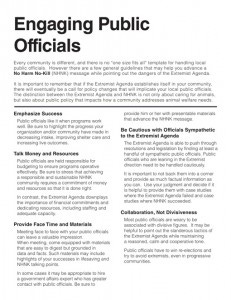
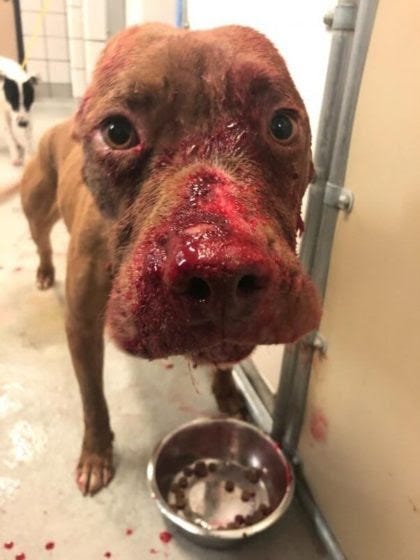
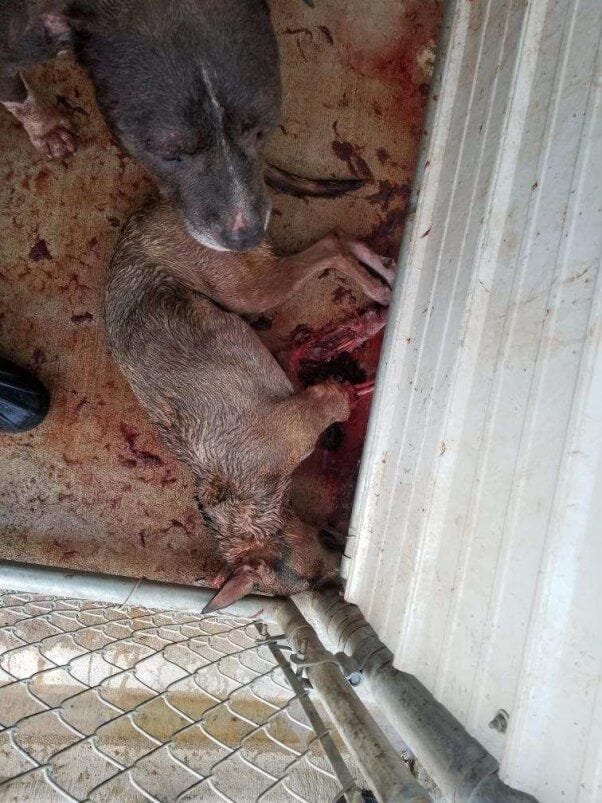
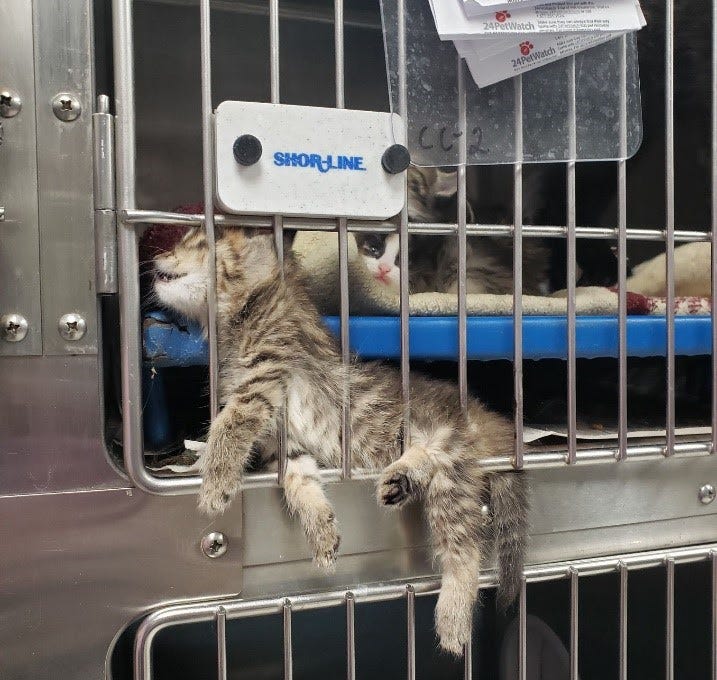

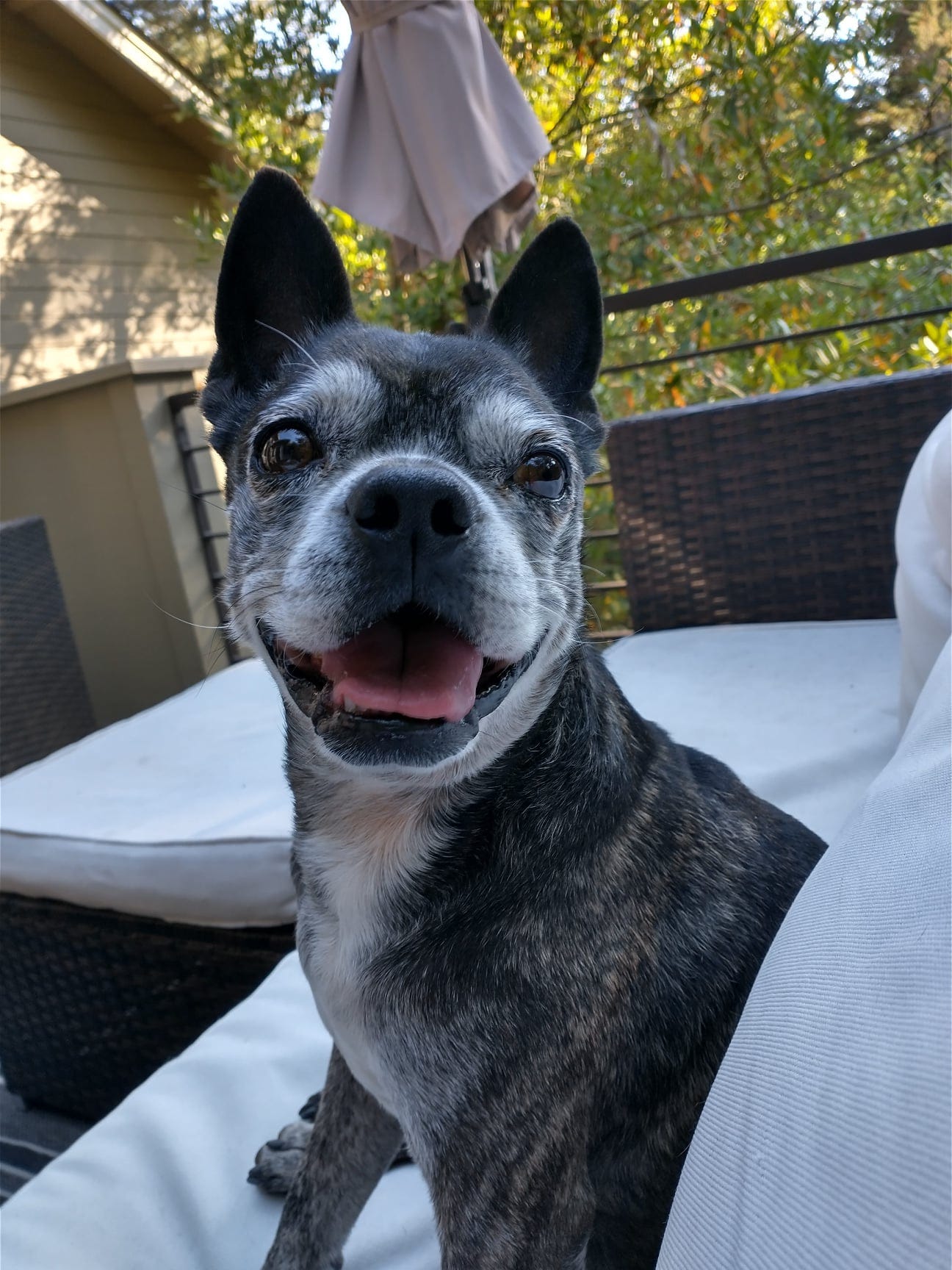
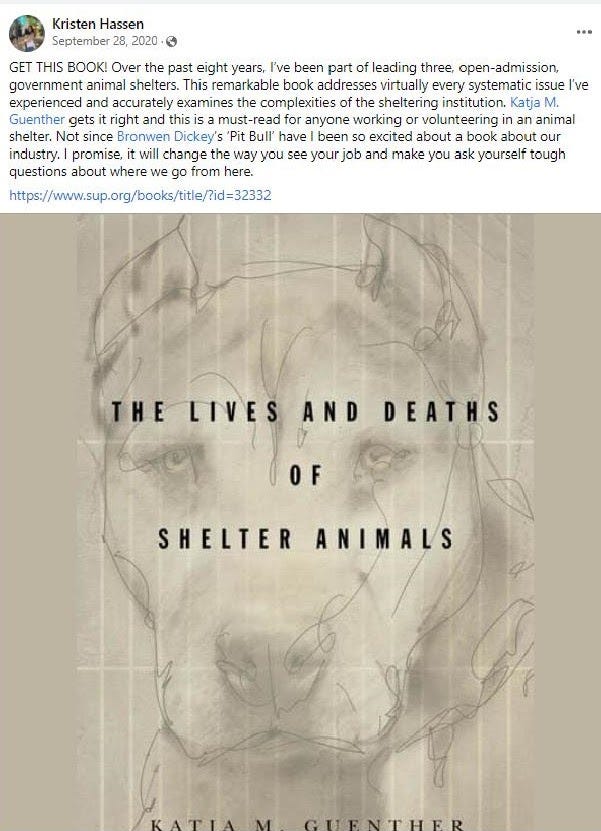
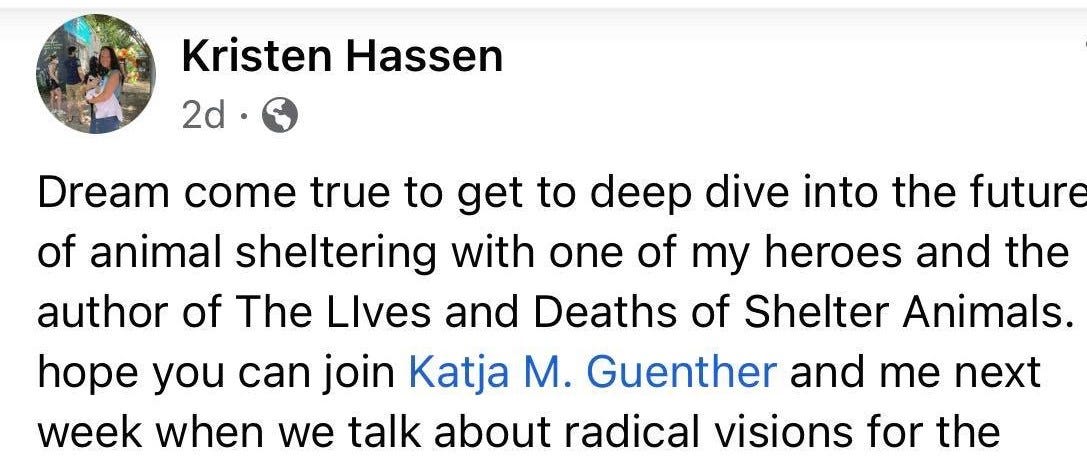


Thank you for shining a light on this eye-opening and heartbreaking development at APA, Nathan. I really appreciate your analysis on the subject.